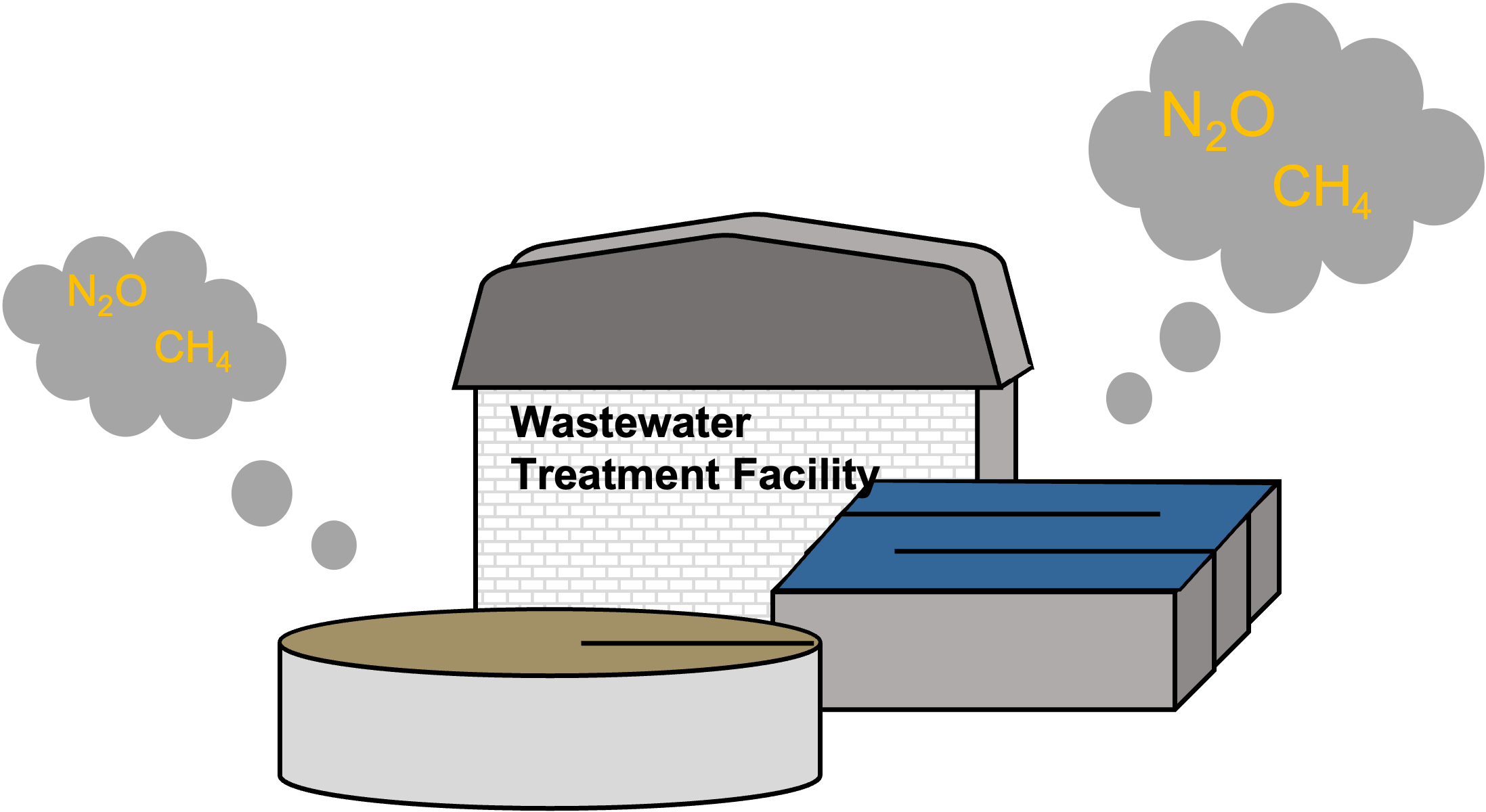Select one of the buttons below to enter your scope 3 category 5 data. There are two options: Waste & wastewater (quantity of solid waste and volume of wastewater), and Purchasing data (dollars or MT eCO2).
Waste & Wastewater (weight or volume)

What is included in the waste generated in operations category?
The waste generated in operations category includes the emissions generated from the disposal and treatment of waste generated by the reporting organization in the reporting year. Examples of waste include solid waste (e.g., landfilled waste, incinerated waste) and wastewater. Waste generated in operations is category 5 of scope 3.
Solid waste

The solid waste category calculates the emissions associated with disposal of municipal solid waste from the organization. The emissions from landfilled waste are primarily generated from the decomposition of organic materials (e.g., food), which releases the potent greenhouse gases methane (CH4) and nitrous oxide (N2O). Because the warming effect from methane is 28 times that of carbon dioxide, landfills sometimes include flaring to burn methane and convert it to carbon dioxide to reduce greenhouse gas emissions. Methane can also be captured and burned as a fuel (biogas) to generate electricity. The major source of emissions from incinerated waste is the combustion emissions from the conversion of carbon in the waste into carbon dioxide.
See below for a full list of options for waste disposal in SIMAP (e.g., landfilled waste, incinerated waste). The solid waste emission factors in SIMAP are collected from the EPA Emission Factors Hub. Previously (in emission factor versions 2020-2022), the EPA Waste Reduction Model (WARM) was used, but the EPA no longer recommends using WARM for organizational inventories (read more about why WARM is not used for GHG inventories). Since the EPA Emission Factors Hub only offers incinerated waste and landfilled waste emission factors, all incinerated waste treatment options in the 2024 version of emission factors use the incinerated waste emission factors and all landfilled waste treatment options use the landfilled waste emission factors. We are exploring potential updates to this methodology for the 2025 version of emission factors.
Wastewater
Wastewater treatment is the treatment of sewage by a central wastewater treatment facility or through the use of septic tanks for rural areas. There are many different methods for treating wastewater, and each method has different emissions associated with it. To determine your wastewater treatment method, contact your local wastewater treatment facility. The wastewater treatment methods in SIMAP include central treatment (e.g., aerobic, anaerobic) and septic treatment. Central wastewater treatment can include primary treatment (removal of debris, sediment), secondary treatment (removal of organic material using filters and activated sludge), and advanced tertiary treatment (e.g., removal of heavy metals). The greenhouse gases emitted during wastewater treatment are methane and nitrous oxide, which are released from the chemical processes and microbial activity that occur during wastewater treatment. See below for a full list of the wastewater treatment methods available in SIMAP.
See the SIMAP guidance on wastewater for more details.
What options are available in SIMAP for waste generated in operations data entry?
- Solid waste: Enter the weight of solid waste generated and assign it to the appropriate waste treatment category. The options for waste disposal method in SIMAP are:
- Landfilled waste: CH4 recovery and electric generation
- Landfilled waste: CH4 recovery and flaring
- Landfilled waste: No CH4 recovery
- Incinerated waste: Mass burn
- Incinerated waste: Refuse derived fuel (RDF)
- Other (note: this category is intended to be customized and does not have any default emissions factors)
- Wastewater: Enter the volume of wastewater generated and assign it to the appropriate wastewater treatment category. Wastewater volume is often estimated by stating with the purchased water (e.g., from utility bills) and subtracting a % of water used for other purposes that would not reenter the wastewater stream (e.g., water for irrigation). See the SIMAP wastewater guidance for more detailed. The wastewater treatment options in SIMAP are:
- Central treatment system: Aerobic
- Central treatment system: Aerobic + anaerobic digestion
- Central treatment system: Anaerobic
- Central treatment system: Anaerobic + anaerobic digestion
- Septic system
- Other (note: this category is intended to be customized and does not have any default emissions factors)
- Purchasing data: Enter dollars spent by purchasing category. You can assign any of the purchasing data categories to the waste generated in operations category. Note that purchasing data is intended to provide an order of magnitude estimate. See this page for guidance on purchasing data entry.
Sources
GHG Protocol Corporate Value Chain (Scope 3) Accounting and Reporting Standard
How Wastewater Treatment Works: The Basics: https://www3.epa.gov/npdes/pubs/bastre.pdf
Inventory of U.S. Greenhouse Gas Emissions and Sinks: 1990-2019 – Waste - Corrected Per Corrigenda, Updated 05/2021: https://www.epa.gov/sites/default/files/2021-04/documents/us-ghg-inventory-2021-chapter-7-waste.pdf?VersionId=skK.lO1zbaYrNwnmUKNiyepctaM_yV3z
Chapter 6: Wastewater Treatment and Discharge: https://www.ipcc-nggip.iges.or.jp/public/2019rf/pdf/5_Volume5/19R_V5_6_Ch06_Wastewater.pdf
WARM Life‐Cycle GHG Accounting Versus GHG Emission Inventories. Also available here.


